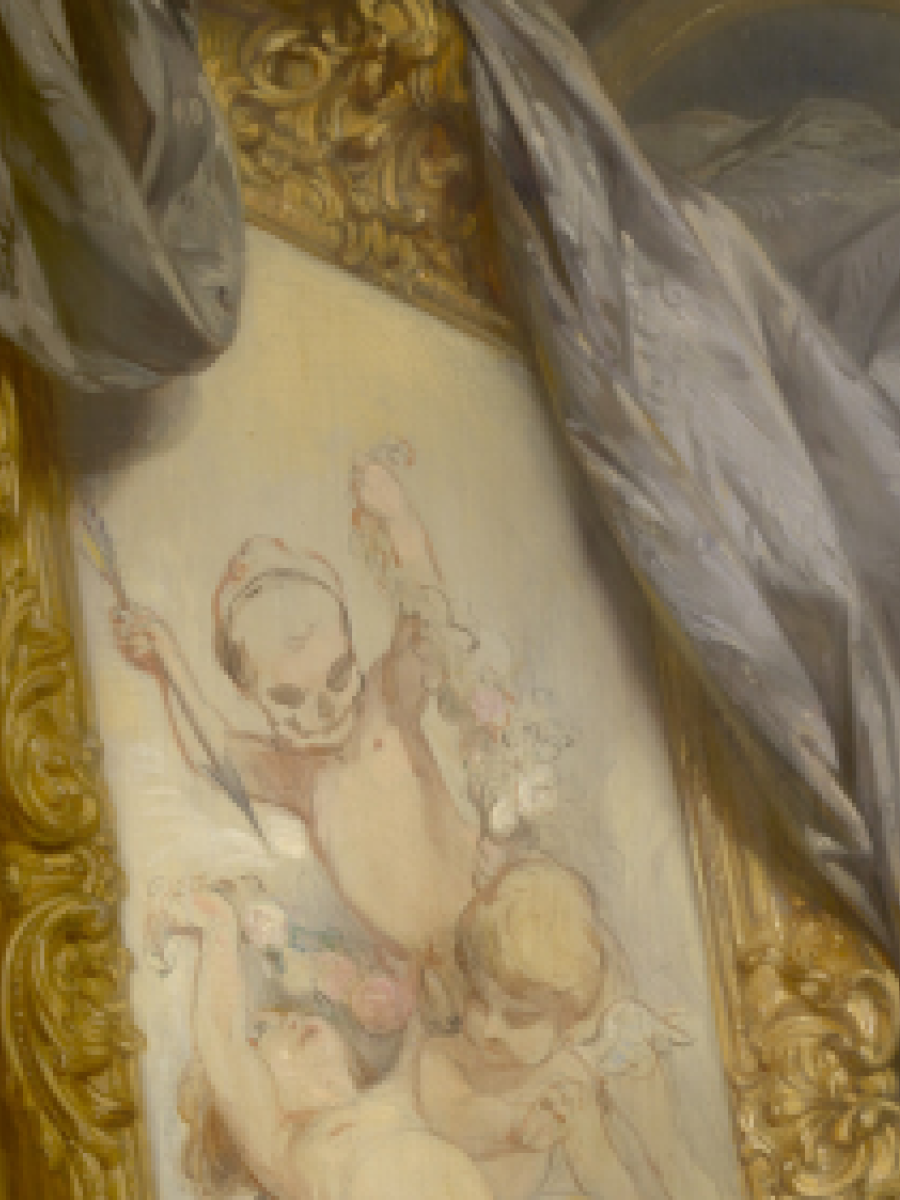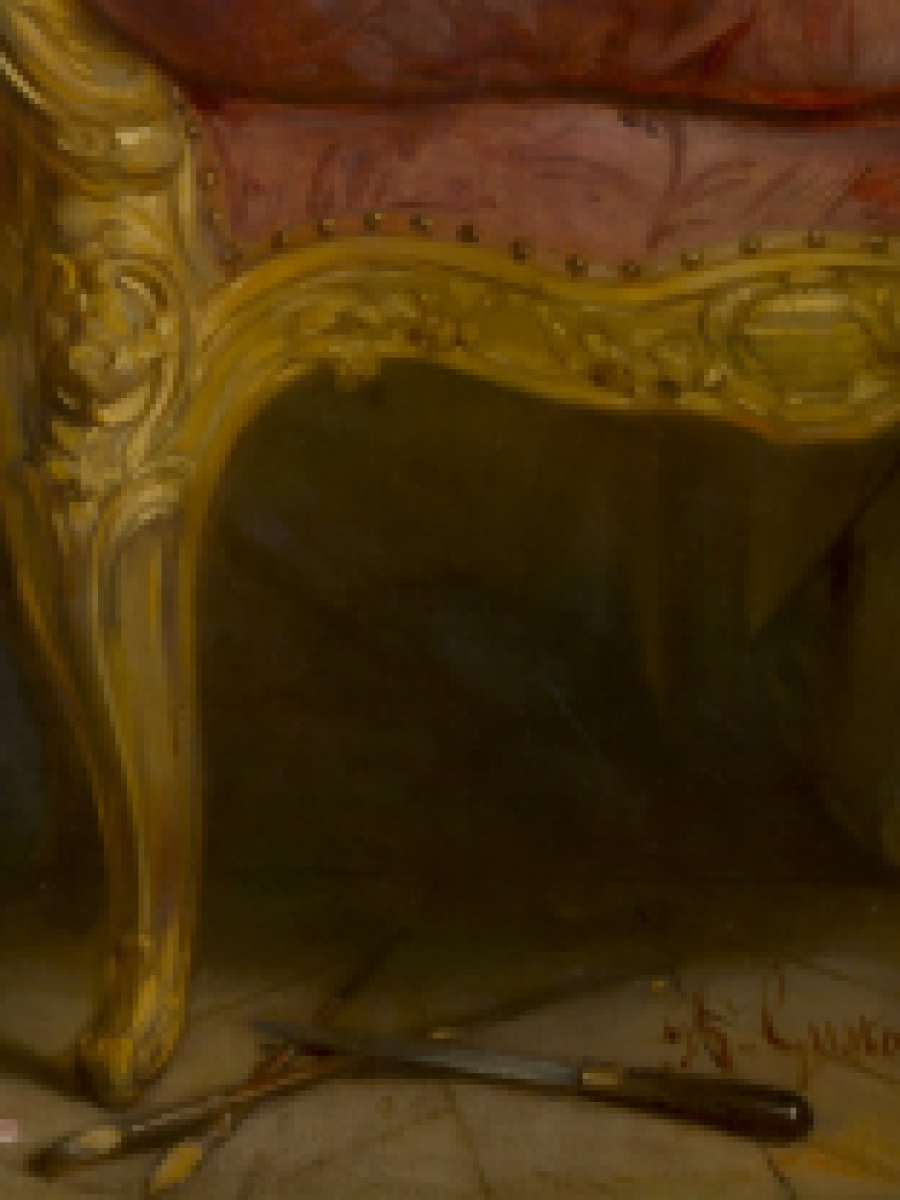The death on canvas

At first glance, Gustaf Wappers' Young Artist Daydreaming looks like a charming and lovely scene, in the setting of an 18th-century artist's studio. The bright color palette of white, light blue and pink is reminiscent of airy rococo tiles. But a closer look reveals the young woman's dark, brooding gaze. She has interrupted her painting and stares blankly ahead.
Painter's daughter
On her unfinished canvas, winged children tumble frolicking through the air: they are putti or minstrels. They dance, they frolic and they celebrate love. But not all of them. One of them wears a skull mask and is about to pierce his playmates with an arrow. What is going on here? Is the musing artist mourning a lost love and expressing her heartbreak in the painting-in-progress?

Putto with as skull

The long, sharp knife
When a draft drawing of the painting turned up in an Antwerp private collection, Wappers' work could finally be pinpointed more precisely. The drawing is one of three preparatory sketches listed in the auction catalog of Wappers' estate as La fille du peintre Van Loo. The young artist would have been the model for Caroline van Loo, the daughter of painter Carle van Loo (1705-1765), whose life story Arsène Houssaye recorded in 1842 in the prestigious French magazine Revue des Deux Mondes. There he depicts Caroline as a pale girl who is quiet in life and prefers to spend her days reading and musing. One morning, Father Van Loo catches his wistful daughter in the studio: she is drawing death, with her features. A few days later, Caroline dies. Not even the handsomest physicians in Paris were able to save her. For Carle van Loo, it was clear: Caroline's hunger for reading was the cause of her death.
Made up character
For a romantic artist like Wappers, this tragic story full of weltschmerz and death wish was gefundenes fressen. He sums up the whole story in the decisive scene in which he subtly captures the tension and thrill of Caroline's dramatic end. He allows himself the poetic license not to let her die of a mysterious illness but lets Caroline commit suicide and, on the plank floor, quasi casually places a long, sharp knife between the brushes .
Coincidence, or not? In 1857, the year Wappers paints this canvas, Gustave Flaubert's notorious novel Madame Bovary is published. Emma, the main character, is a young doctor's wife in the French province who takes her own life, disappointed in life and love. Like Caroline, Emma was an avid reader and succumbed to her yearning for a different kind of existence.
It would later be seen that Houssaye was not a reliable biographer. Without hesitation, he mixed fact and fiction. Caroline is apparently an invented character. The real daughter of Carle van Loo was called Marie-Rosalie and also died a tragic death at the age of 21, after complications in childbirth.
This article previously appeared in ZAAL Z, the museum's magazine. For only 35 euros you will receive four editions that immerse you in the fascinating world of the museum and its magnificent collection.



